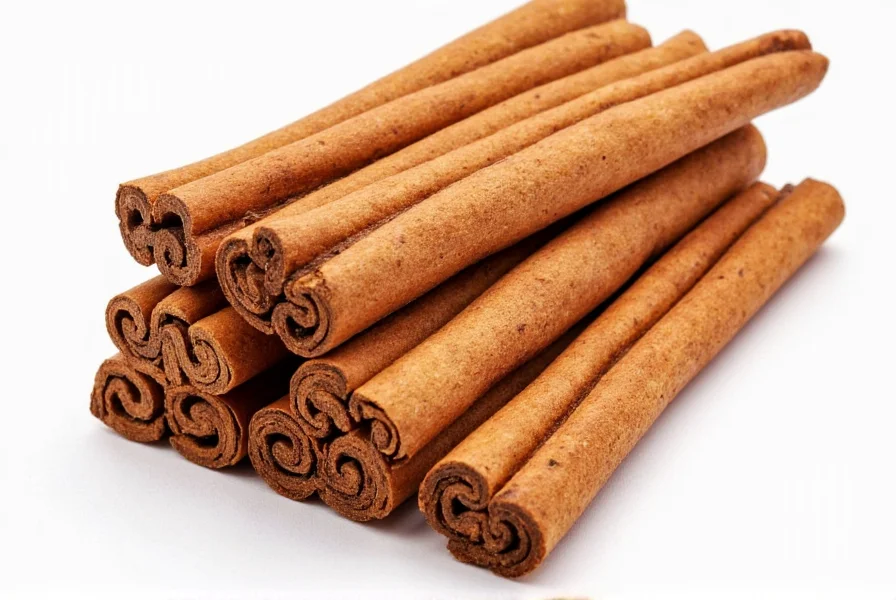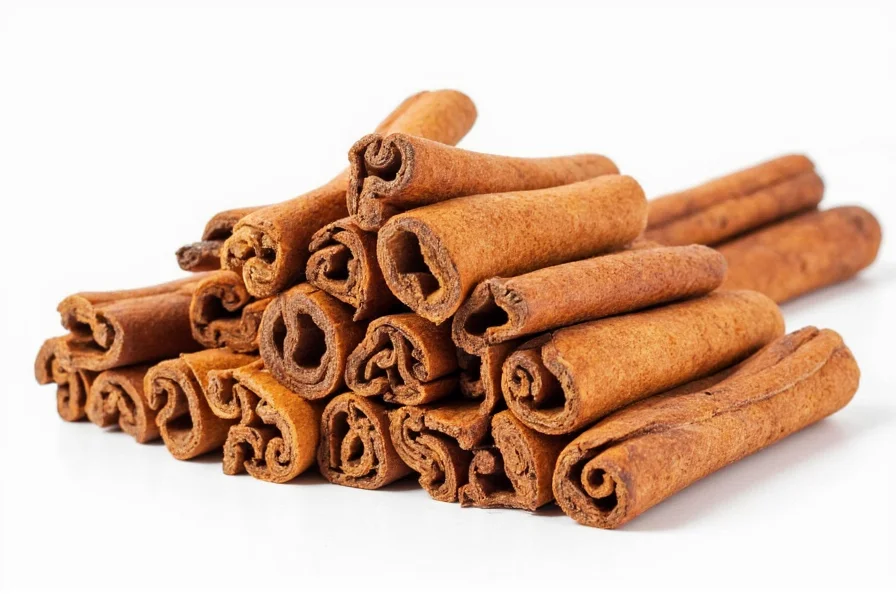When shopping for authentic Mexican cinnamon products, understanding the distinction between these varieties is crucial for achieving traditional flavors in dishes like churros, horchata, and mole. The confusion around "Mexican cinnamon" stems from regional naming conventions and import practices rather than botanical origins.
Understanding Cinnamon Varieties in Mexican Cuisine
The term "Mexican cinnamon" creates widespread confusion among home cooks and professional chefs alike. True Mexican cinnamon, known locally as canela, refers specifically to Ceylon cinnamon (Cinnamomum verum) that has been processed into thin, delicate quills. This variety features multiple thin layers that easily crumble when ground, making it ideal for Mexican beverages and desserts where a smooth texture matters.
In contrast, what many American grocery stores label as "Mexican cinnamon" is typically Cassia cinnamon (Cinnamomum cassia) from China or Indonesia. Cassia has a thicker, harder bark with a more intense, slightly bitter flavor profile and higher coumarin content. While Cassia works in some Mexican recipes, it lacks the nuanced sweetness of authentic canela.
| Cinnamon Type | Botanical Name | Flavor Profile | Common Use in Mexico |
|---|---|---|---|
| Canela (Mexican cinnamon) | Cinnamomum verum | Sweet, delicate, citrus notes | Horchata, churros, mole |
| Regular Cassia | Cinnamomum cassia | Strong, spicy, slightly bitter | Limited traditional use |
| Saigon Cinnamon | Cinnamomum loureiroi | Intensely spicy, high oil content | Modern fusion recipes |
Why the Confusion Around Mexican Cinnamon?
Mexico doesn't commercially grow cinnamon—it imports nearly all cinnamon used in its cuisine. The misconception that Mexico produces its own cinnamon variety likely stems from the distinctive way Mexican recipes incorporate cinnamon. Traditional Mexican markets sell Ceylon cinnamon as canela, which translates to "cinnamon" but specifically denotes the softer, sweeter variety.
When Mexican immigrants opened markets in the United States, they continued selling Ceylon cinnamon as "canela," leading American consumers to associate this specific form with Mexican cuisine. Meanwhile, many mainstream US grocery chains began labeling their standard Cassia cinnamon as "Mexican cinnamon" to capitalize on the popularity of Mexican food, further muddying the waters.

Identifying Authentic Mexican Cinnamon Products
To find genuine Mexican cinnamon for traditional recipes, look for these key identifiers:
- Physical characteristics: Authentic canela consists of multiple thin, papery layers that crumble easily when bent. Cassia forms a single thick, hard quill that resists breaking.
- Labeling: Look for "Ceylon cinnamon," "canela," or "Mexican cinnamon" from specialty Latin markets. Avoid products listing "cassia" as the primary ingredient.
- Texture: When ground, canela produces a fine powder without hard fragments, while Cassia often leaves gritty pieces.
- Flavor test: Authentic Mexican cinnamon offers a sweeter, more complex flavor with subtle citrus notes rather than overwhelming heat.
For traditional Mexican dishes like champurrado (chocolate-based atole) or arroz con leche, authentic canela provides the delicate flavor balance that Cassia's stronger profile would overwhelm. The difference becomes particularly noticeable in beverages where cinnamon dissolves completely.
Substituting Mexican Cinnamon in Recipes
If you can't find authentic Mexican cinnamon, consider these substitution strategies:
- For recipes requiring ground cinnamon: Use 3 parts Ceylon cinnamon to 1 part Cassia to approximate canela's flavor profile
- For beverages like horchata: Steep whole canela sticks rather than using pre-ground to prevent bitterness
- When using Cassia as a substitute: Reduce the amount by 25-30% to avoid overpowering other flavors
- For churros: Add a pinch of orange zest to Cassia to mimic canela's citrus notes
Understanding the difference between Mexican cinnamon and regular cinnamon significantly impacts recipe outcomes. The coumarin content in Cassia (up to 63 times higher than Ceylon) also matters for frequent consumers, as high coumarin intake may affect liver health over time.
Preserving Mexican Cinnamon Flavor
Proper storage maintains the delicate flavor compounds in authentic Mexican cinnamon:
- Store whole canela sticks in airtight glass containers away from light and heat
- Grind cinnamon only when needed, as ground spice loses volatile oils within 6 months
- Avoid refrigeration, which introduces moisture that degrades flavor
- Check freshness by rubbing a small piece between fingers—fresh canela releases a sweet, citrusy aroma
When shopping for Mexican cinnamon sticks, bend a small piece gently. Authentic canela should flex and eventually break into multiple layers, while Cassia will snap cleanly with considerable force. This simple test reliably distinguishes between the two varieties.
Common Misconceptions About Mexican Cinnamon
Several myths persist about Mexican cinnamon that affect cooking results:
- Myth: Mexican cinnamon is a specific variety grown in Mexico
Reality: Mexico imports all its cinnamon; "Mexican cinnamon" refers to how Ceylon cinnamon is processed and used - Myth: All cinnamon labeled "Mexican" is authentic
Reality: Many US products mislabel standard Cassia as Mexican cinnamon - Myth: Mexican cinnamon is always stronger than regular cinnamon
Reality: Authentic canela is milder than Cassia; the stronger flavor comes from mislabeled Cassia products
For authentic Mexican mole recipes, the type of cinnamon matters significantly. Traditional moles use canela for its subtle sweetness that complements chocolate without overwhelming other complex spices. Using Cassia instead creates a harsher, more one-dimensional flavor that misses the nuanced balance of authentic preparation.
Frequently Asked Questions
What is the difference between Mexican cinnamon and regular cinnamon?
Mexican cinnamon (canela) typically refers to Ceylon cinnamon with thin, multi-layered quills and a sweeter, more delicate flavor, while regular cinnamon in the US is usually Cassia with a thicker, harder bark and stronger, spicier taste. Authentic Mexican recipes use canela, but many US products mislabel Cassia as Mexican cinnamon.
Can I substitute regular cinnamon for Mexican cinnamon in recipes?
Yes, but with adjustments. Use 25-30% less Cassia cinnamon than the recipe calls for Mexican cinnamon, or blend 3 parts Ceylon with 1 part Cassia. For beverages, steep whole sticks rather than using pre-ground to prevent bitterness. Authentic Mexican dishes like churros and horchata benefit significantly from using true canela.
Why is Mexican cinnamon sometimes called canela?
Canela is the Spanish word for cinnamon, but in Mexico it specifically refers to the Ceylon variety with thin, delicate quills preferred in traditional recipes. The term distinguishes it from the stronger Cassia cinnamon commonly sold in the US, helping consumers identify the preferred variety for authentic Mexican cooking.
Is Mexican cinnamon healthier than regular cinnamon?
Authentic Mexican cinnamon (Ceylon variety) contains significantly less coumarin than Cassia cinnamon, which is beneficial for regular consumption. High coumarin intake from Cassia may affect liver health over time. Both varieties offer similar antioxidant benefits, but Ceylon's lower coumarin content makes it safer for daily use in beverages like Mexican hot chocolate.
Where can I buy authentic Mexican cinnamon?
Authentic Mexican cinnamon (canela) is typically found in Latin American markets, specialty spice shops, or online retailers that specify Ceylon cinnamon. Look for thin, multi-layered quills that crumble easily when bent. Avoid products listing "cassia" as the primary ingredient. Mexican brands like La Morena or Badia often sell genuine canela in the international section of larger grocery stores.











 浙公网安备
33010002000092号
浙公网安备
33010002000092号 浙B2-20120091-4
浙B2-20120091-4